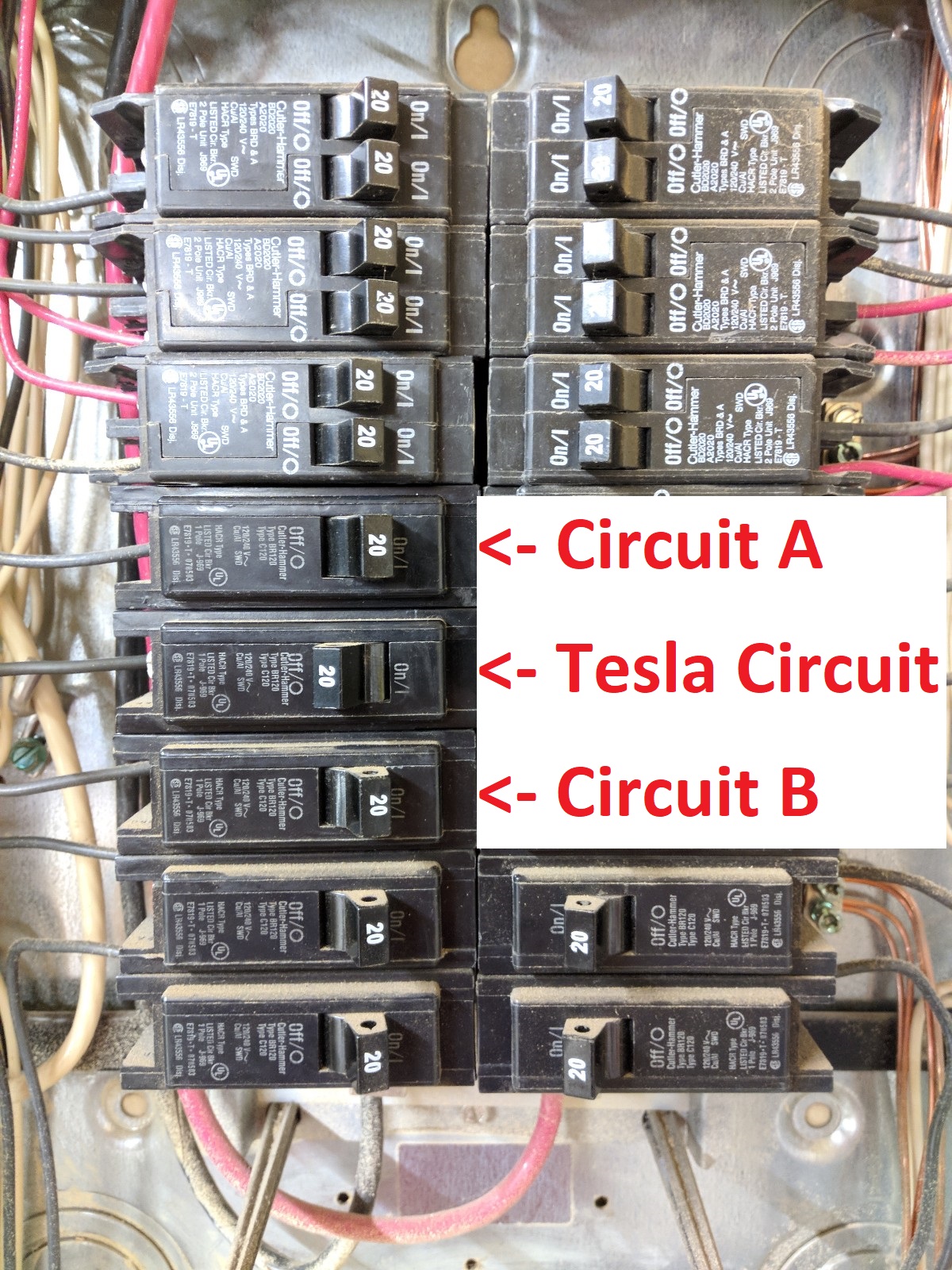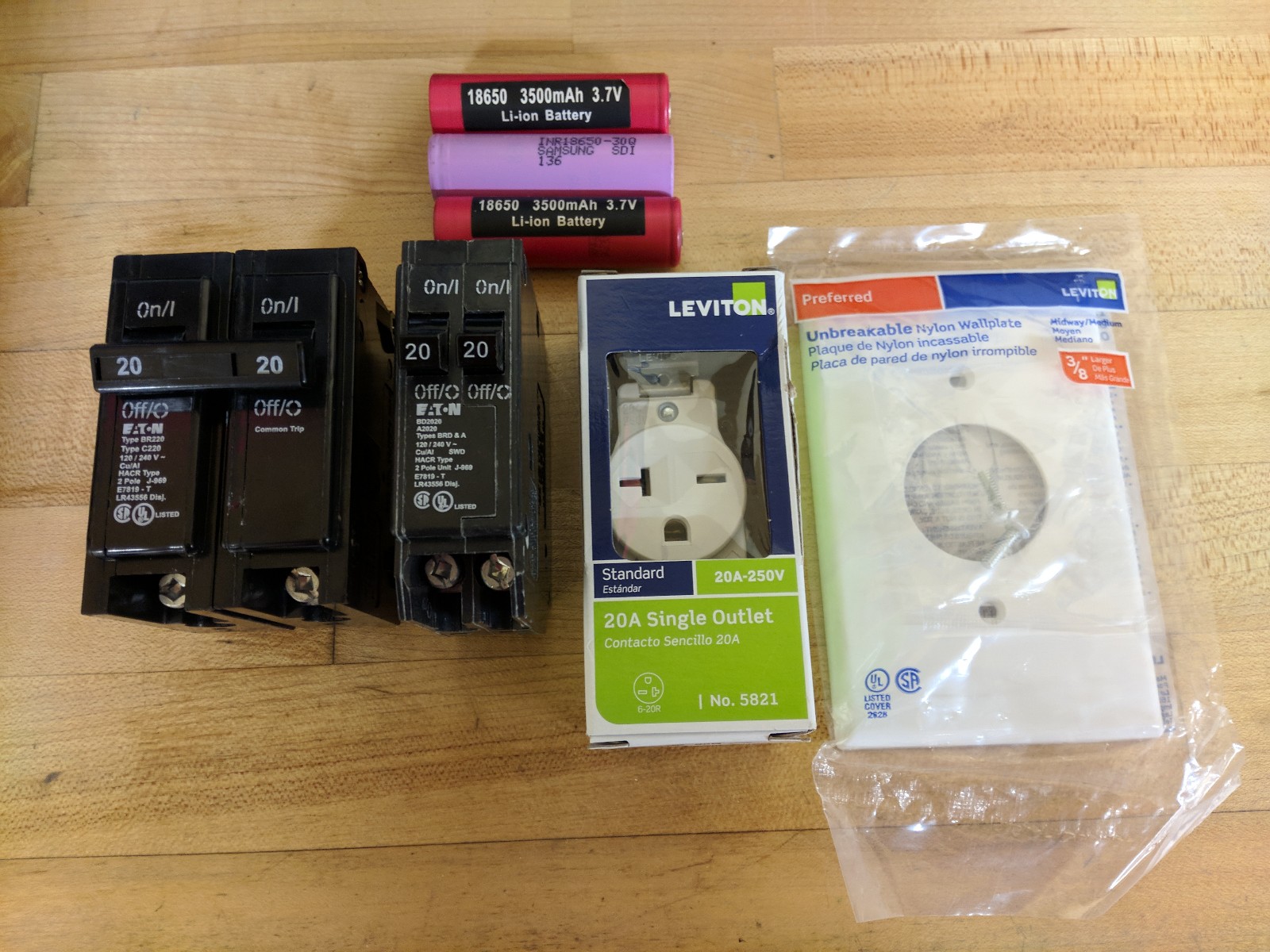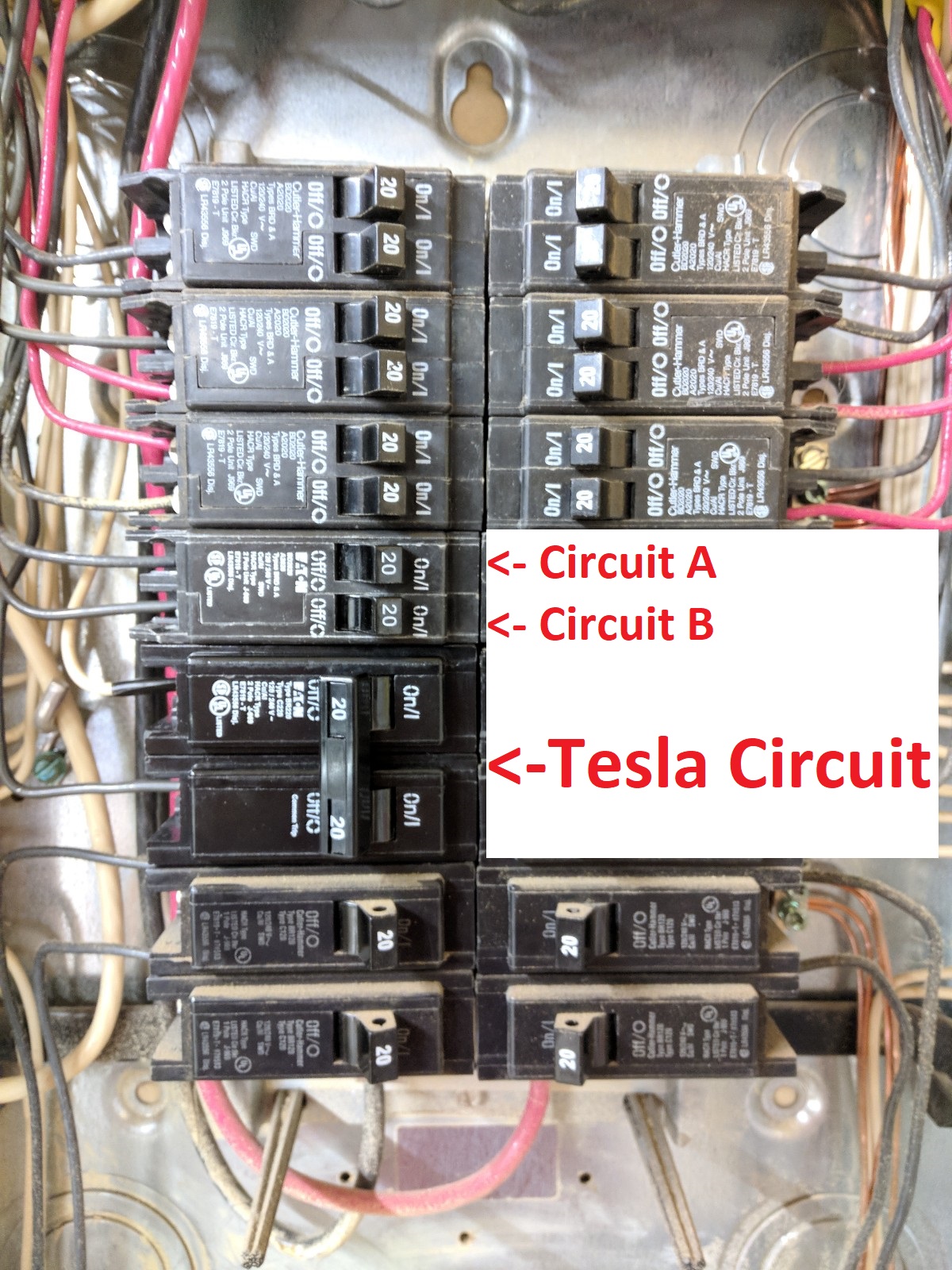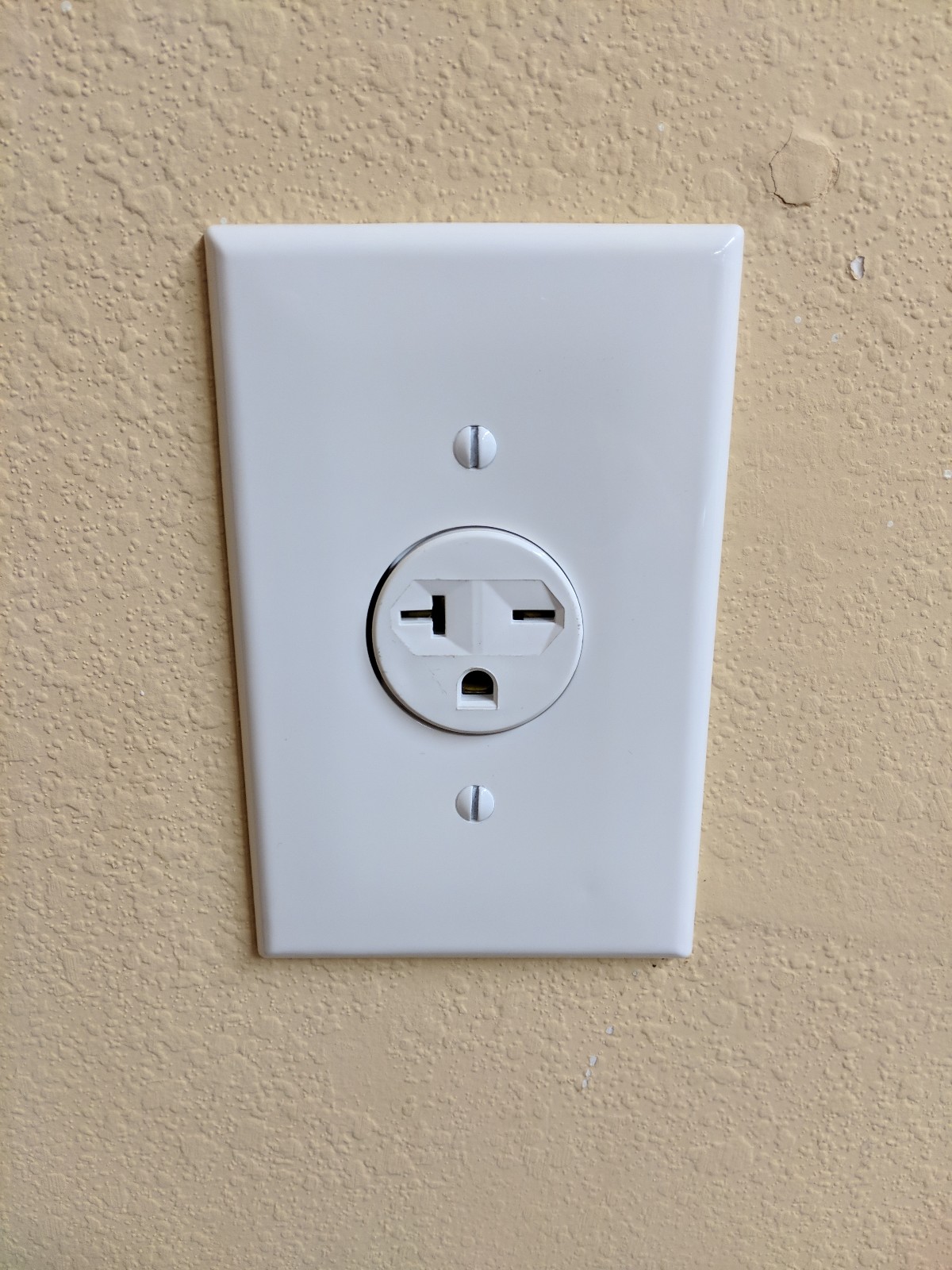Who are you replying to? If you are saying this to the original poster, that's not right. This is a 6-20 outlet. It only has three connections. It can't use four wires to connect, as @Mike Hawk pointed out.Looks likely you used the wrong wire. You must use four conductor wire. Red black white and an insulated ground. So you’re using the ground as the white wire and there’s no dedicated ground. The ground wire is an insulated and usually thinner than the other ones. Not safe at all. all powerlines have Two layers of insulation. There’s the outer layer of insulation plus each wire individually has its own insulation for a good reason. Get the right wire as soon as possible
Welcome to Tesla Motors Club
Discuss Tesla's Model S, Model 3, Model X, Model Y, Cybertruck, Roadster and More.
Register
Install the app
How to install the app on iOS
You can install our site as a web app on your iOS device by utilizing the Add to Home Screen feature in Safari. Please see this thread for more details on this.
Note: This feature may not be available in some browsers.
-
Want to remove ads? Register an account and login to see fewer ads, and become a Supporting Member to remove almost all ads.
You are using an out of date browser. It may not display this or other websites correctly.
You should upgrade or use an alternative browser.
You should upgrade or use an alternative browser.
How I upgraded from NEMA 5-15 to NEMA 6-20 for $66
- Thread starter Mike Hawk
- Start date
rudholm
Member
What Rocky_H said. NEMA 6 receptacles have no Neutral, so you need three conductors; Hot, Hot, and Ground. All the OP did was re-purpose the old Neutral wire from the original NEMA 5 receptacle (which uses Hot, Neutral, and Ground) and use it for the other Hot, so he now has the needed Hot, Hot, and Ground. The load carrying conductors were already 12 AWG so that's suitable for the 20A a NEMA 6-20 is supposed to be able to deliver. The OP also tagged the repurposed white Neutral wire with black tape on each end, which is also permissible (and quite common). The pictures don't show what he did with Ground, but presumably he just kept using the same ground that the original receptacle used. (which can be bare or insulated per the NEC).Who are you replying to? If you are saying this to the original poster, that's not right. This is a 6-20 outlet. It only has three connections. It can't use four wires to connect, as @Mike Hawk pointed out.
3sr+buyer
Active Member
However, many older houses have garage outlets on circuits that are shared with other outlets in the house, preventing such a conversion.Well done sir!! I'm surprised this isn't more popular. It's by FAR the most cost effective L2 option and 16A @ 240 is more than enough unless you're a full time Uber driver... especially as Superchargers become more plentiful so on the very rare occasion you need a quick boost you can just use that...
Summoner12
New Member
Thank you so much for adding that info.
My concern here is, does this go to any other outlets?????? If so, POP! goes the..... whatever got plugged in.
My concern here is, does this go to any other outlets?????? If so, POP! goes the..... whatever got plugged in.
It's a good option. I just hope people do their research when diving into this modification of existing home wiring. Because if your home isn't new, you need to do a LOT of research on what wires go where, how large... how many connections... just a lot of work. I would save this mod for a DIY outlet that is newly installed, below the sub-panel that happens to be in the garage where the outlet is going. There can be so many possible issues here on old construction.
My concern here is, does this go to any other outlets?????? If so, POP! goes the..... whatever got plugged in.
Thank you so much for adding that info.Fantastic job and documentation!
A few notes for others that read this:
I presume that breaker slot was rated for tandem use (probably was). Usually will have a notched bus stab.
When moving circuits around to tandems, you must be careful to keep multi wire branch circuits (shared neutral) on opposite phase legs. Otherwise you can overload the shared neutral.
I should also note that most household circuits are 14 gauge, so only capable of a 15a circuit. Garage circuits are often (but not always) 12 gauge (for whatever reason NEC allows 15a receptacles on 20a circuits). Regardless, you can also play this trick on 15 amp circuits too. Just do a 6-15 receptacle instead of 6-20.
*very* nice job!
P.S. That panel is tiny! What gauge wire and circuit breaker feed it? You sure you are not pushing the load calcs on it?
My concern here is, does this go to any other outlets?????? If so, POP! goes the..... whatever got plugged in.
It's a good option. I just hope people do their research when diving into this modification of existing home wiring. Because if your home isn't new, you need to do a LOT of research on what wires go where, how large... how many connections... just a lot of work. I would save this mod for a DIY outlet that is newly installed, below the sub-panel that happens to be in the garage where the outlet is going. There can be so many possible issues here on old construction.
davewill
Active Member
Yeah, it's a great option, and I often mention it, but so few people happen to have a dedicated circuit in the right place that they can convert.
RayK
Active Member
Bottom screw is off to the right a couple of degrees; not perfectly vertical. And the outlet is not labelled with the breaker number either. Furthermore, the socket is not centered with respect to the hole in the plate. Spoken by a semi-OCD person.I think I see OCD here, or is it just coincidence that both outlet plate screw slots are perfectly vertical!
Simple and elegant solution to triple charging speed.
Bottom screw is off to the right a couple of degrees; not perfectly vertical. And the outlet is not labelled with the breaker number either. Furthermore, the socket is not centered with respect to the hole in the plate. Spoken by a semi-OCD person.

Jeremy3292
Active Member
A NEMA 6-20 is a fantastic, cheap option as it only requires 12-2 ROMEX and a 20 amp breaker. I personally had this installed at my parents house for when I visit.
EVer Hopeful
Active Member
Bottom screw is off to the right a couple of degrees; not perfectly vertical. And the outlet is not labelled with the breaker number either. Furthermore, the socket is not centered with respect to the hole in the plate. Spoken by a semi-OCD person.
"semi-OCD" is easy. Wait till you catch CDO . . .
. . . it's like OCD, but with the letters in the right order !
qdeathstar
Completely Serious
Figured I'd document this for anyone else's amusement. A relatively cheap and easy upgrade path (with a few caveats) is to use your existing wiring and simply switch out the breaker to a double pole so it get's both phases of 120v and convert the neutral (white) wire to a hot (black/red) wire.
There are three main caveats for this to work:
1) The outlet you're converting can be the only outlet on the circuit. Otherwise you risk anything 120v plugging in to go POOF and start a potential fire.
2) Your existing wiring is 12 gauge. Most new homes use 12 gauge and 20 amp breakers even though the outlets are only 15 amp.
3) You're breaker box can take the added 120v 16a load.
Luckily for me there was an existing outlet in my garage right by the charge port. Even more lucky was it was a dedicated circuit! I decided to give NEMA 6-20 a shot. I may still upgraded to 48a service as I have a HPWC that was gifted to me. Jury is still out.
Anyhoo on to the process:
Before shot: Great, my 60a sub-panel was already maxed out with breakers, no free slots. Drats:

However there was a way around that. I simply converted one of the full size breakers to a twin.
Here's the parts list I got from Home Depot. Left to right, plus a few glorious 18650s thrown in for good measure:
$9.68 20 Amp 2 Pole Circuit Breaker
$9.97 2-20 Amp Single Pole Tandem Circuit Breaker
$4.97 NEMA 6-20 Outlet
$0.98 NEMA 6-20 Outlet Cover
Not shown: $35 NEMA 6-20 Mobile Adapter

The finished product after ~30 minutes of fiddling around swapping breakers and reconnecting the conductors. I added black electrical tape to the neutral that is now getting an extra 120v going to my Tesla outlet. Finding that neutral on the bus bar was not fun, it took several tries trying to trace it in my rats nets of wires.

All done and ready for the Mobile Charger

I consume ~20% of my P3D+ battery daily and it takes ~3-4 hours to recharge back to 80% SoC on my NEMA 6-20. There really isn't much need to go for more amperage TBH for my needs. Only one time so far have I taken my car down to less than 10% and it was back up to 80% within 14 hours.
Hope this helps and cheers!
PS I am not a licensed electrician. Do not follow my advice yada yada yada.
Seems like a good way to let the smoke out of you aren’t sure what you are doing. If there is one extra outlet on that circuit you gonna have problems.
qdeathstar
Completely Serious
It’s not required to be red. It’s implied by the black blue orange red brown ect ect tape. On a single phase system, I’d argue that black is more suitable. Black red blue is convention for a 120/208v three phase system. So save the red for that kind of system…. But like @Rocky_H said color doesn’t matter as long as it isn’t white green or grey.I'd still use red - since there is already a black wire on the other hot leg of the same circuit.
Similar threads
- Question
- Replies
- 16
- Views
- 1K
- Replies
- 19
- Views
- 556
- Replies
- 6
- Views
- 1K
- Replies
- 24
- Views
- 2K


